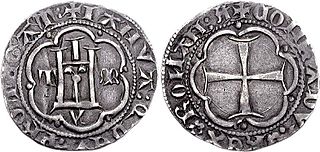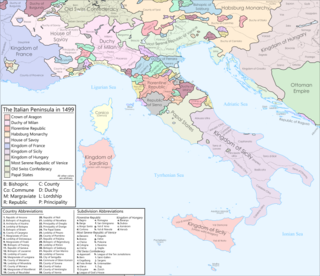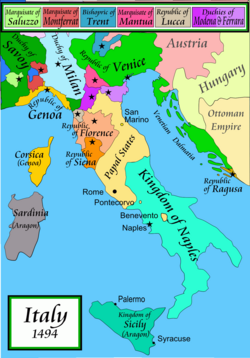History
The castle of Incisa is mentioned for the first time in 984. The marquisate originated from Alberto del Vasto, a descendant of the Aleramici who had been exiled to southern Italy; here he helped Roger II of Sicily against the rebel baron, and was made count of Gravina. His son Alberto in 1161 obtained several lands near Incisa. He died in 1181 during a battle, in which his son was also severely wounded; Alberto's wife, Domicella, acted as regent. In 1189 she imprisoned two ambassadors of the Republic of Genoa, a feat which caused emperor Henry VI to transfer her fiefs to Boniface I of Montferrat; she was however able to keep her lands by allying with the commune of Asti.
In 1203 her junior sons Manfredo and Pagano obtained Montaldo and Rocchetta, starting the branch of Incisa di Rocchetta. During the Angevine wars in Piedmont of the 14th century, the marquisate of Incisa found itself in a dangerous situation, being forced to recognize the authority of Montferrat. In the following century their policy wavered from the alliance with Montferrat or with the Visconti of Milan. In 1428 marquis Petrino fought with Milan against Amadeus VIII of Savoy.
In 1497 Oddone d'Incisa was able to regain the control of the whole marquisate, which had been previously split between several branches of the family. In 1513 he allied with Charles II of Savoy to obtain the investiture as marquis of Montferrat; however, he was discovered, and Incisa was besieged and easily captured in 1514 by William IX of Montferrat. Oddone and his son Badone were executed at Nizza della Paglia. After a dispute with the emperor, Incisa was annexed to Montferrat in 1518. The marquisate was returned to the Incisa in 1536, with Giangiacomo. He died in 1545, being succeeded by his cousin Boarello II. The latter renounced to Incisa in 1548 in exchange for the territories of Camerana and Gottasecca in favour of the Gonzaga family of Milan, who were also namely marquisses of Montferrat at the time.

Saluzzo is a town and former principality in the province of Cuneo, in the Piedmont region, Italy.
Rainier or Renier, son of William IV, Marquis of Montferrat, was the sixth ruler of the state of Montferrat in north-west Italy from about 1100 to his death, and the first such to be identified in contemporary documents as Margrave of Montferrat.

The Duchy of Mantua was a duchy in Lombardy, northern Italy. Its first duke was Federico II Gonzaga, member of the House of Gonzaga that ruled Mantua since 1328. The following year, the Duchy also acquired the March of Montferrat, thanks to the marriage between Gonzaga and Margaret Paleologa, Marchioness of Montferrat.

The Marquisate of Saluzzo was a historical Italian state that included parts of the current region of Piedmont and of the French Alps. The Marquisate was much older than the Renaissance lordships, being a legacy of the feudalism of the High Middle Ages.

William VIII Palaiologos was the Marquis of Montferrat from 1464 until his death.

Theodore II Palaeologus was the Margrave of Montferrat from 1381.
The March or Marquisate of Turin was a territory of medieval Italy from the mid-10th century, when it was established as the Arduinic March. It comprised several counties in Piedmont, including the counties of Turin, Auriate, Albenga and, probably, Ventimiglia. The confines of the march thus stretched across the Po Valley from the Western Alps in the north, to the Ligurian Sea.
William VII, called the Great Marquis, was the twelfth Marquis of Montferrat from 1253 to his death. He was also the titular King of Thessalonica.
William VI was the tenth Marquis of Montferrat from 1203 and titular King of Thessalonica from 1207.
John I was the thirteenth Marquis of Montferrat, last of the Aleramici dynasty, from 1292 to his death.

The Aleramici were a northern Italian noble and royal dynasty of Frankish origin which ruled various northwestern Italian territories in Piedmont and Liguria from the 10th to the 14th century, also reigning over the Kingdom of Jerusalem and the Kingdom of Thessalonica during the 12th and 13th centuries. Their name derived from count Aleramo, proclaimed first Marquis of Central Liguria by emperor Otto the Great in 966. The Aleramici were divided in two main lines: the Marquises of Savona or del Vasto, and the Marquises of Monferrato. In the 14th century the line of Monferrato ended in Irene of Montferrat, Empress of Constantinople, whilst the line of Savona carried on in multiple descending branches.
Boniface II, called the Giant, was the eleventh Marquis of Montferrat from 1225 until his death. He became the titular King of Thessalonica in 1239.
John Jacob Palaeologus was the Margrave of Montferrat from 1418 to 1445.

The Marquisate of Ceva was a small independent state in north-western Italy, situated at the foot of the Apennines, with its seat at Ceva, in what is now a part of Piedmont.

William IX Palaeologus was Marquis of Montferrat from 1494 until his death. He was a member of the House of Palaeologus-Montferrat, a cadet branch of the Palaiologos dynasty which had once ruled the Byzantine Empire.

The Marquisate of Finale was an Italian state in what is now Liguria, part of the former medieval Aleramici March. It was ruled for some six centuries by the Aleramici branch known as marquesses del Vasto and later Del Carretto, when Savona became a free commune. In 1598 the Marquisate was sold by its last marquis, Sforza Andrea to Philip II of Spain and in 1713 it was finally ceded to the Republic of Genoa, where it remained so until 1797, when it was invaded by Napoleon, ceasing its existence.

The House of Malaspina was a noble Italian family of Longobard origin that descended from Boniface I, through the Obertenghi line, that ruled Lunigiana from the 13th to the 14th centuries, and the marquisate of Massa and lordship of Carrara since the 14th century.

The House of Palaeologus-Montferrat or Palaiologos-Montferrat, or just Palaeologus or Paleologo, was an Italian noble family and a cadet branch of the Palaiologos dynasty, the last ruling family of the Byzantine Empire. The cadet branch was created in 1306 when Theodore Palaiologos, fourth son of Byzantine Emperor Andronikos II Palaiologos, inherited the March of Montferrat through his mother, and Andronikos II's second wife, Yolande of Montferrat.
This page is based on this
Wikipedia article Text is available under the
CC BY-SA 4.0 license; additional terms may apply.
Images, videos and audio are available under their respective licenses.












